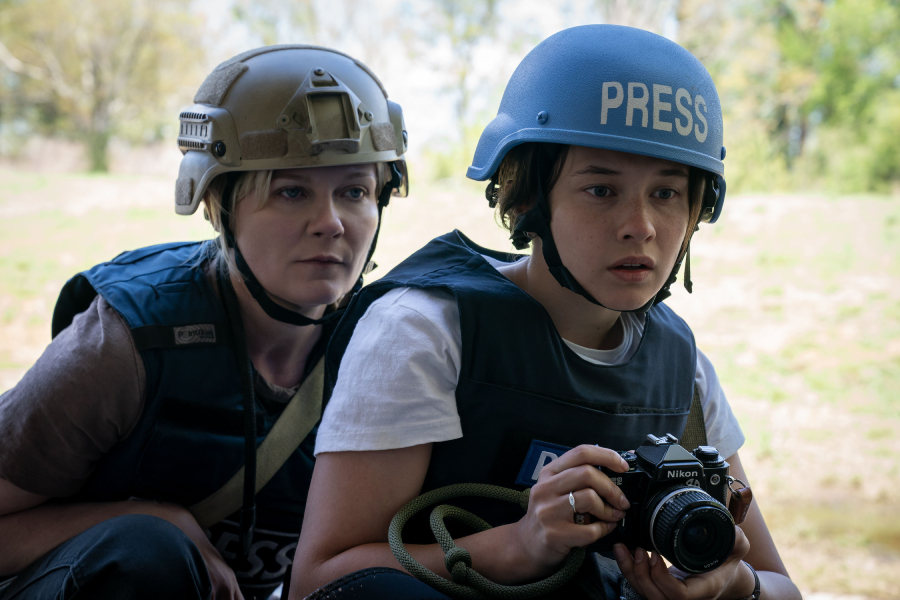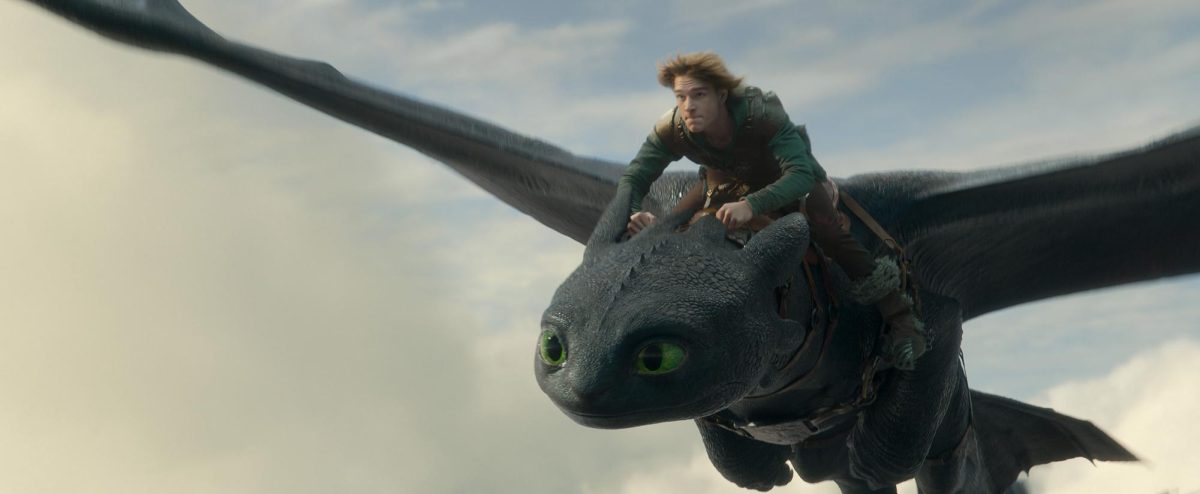In director Alex Garland’s raging, uneasy portrait of the United States’ near future in “Civil War,” the finite details of what issues people are fighting for are intentionally left unclear and unexplored.
Instead, Garland anchors the audience in the perspective of four photojournalists — all varying in age, experience and expertise. After Lee (Kirsten Dunst) decides to travel to the nation’s capitol to interview the U.S. president (Nick Offerman) alongside Joel (Wagner Moura) and Sammy (Stephen McKinley Henderson); up-and-coming journalist Jessie (Cailee Spaeny) joins their efforts with the goal of kick-starting her career as a war photographer.
The areas where “Civil War” shines include its taut exploration of the brave and courageous work of journalists while also tiptoeing into situations where their work borders on exploitation and media sensationalism. One of Garland’s most brilliant devices is intercutting the journalists’ photographs during some of the film’s most tense moments. Additionally, the sound completely cuts out, leaving the simple snap of the photograph to tell the whole story.
In one particularly effective scene at a gas station, Jessie finds herself feeling so uneasy that she forgets to take a picture of the two hung-up bodies in front of her. This serves as a catalyst for the driving moral question presented not only to Jessie, but the audience at large: How can somebody capturing the unspeakable evils of society remain passive? Where is the line drawn?
As compelling as these questions are, Garland’s unwillingness to engage with any basic sort of worldbuilding to juxtapose what these photojournalists are attempting to “stay neutral from” leaves the film feeling general and vague despite some incredible setpieces throughout. It goes beyond the smaller details that people have laughed about online, like the notion that Texas and California could ever join forces.
The emotional plight that these journalists endure is clear-cut, but we never quite understand what drives them to do this work, regardless of the time the audience spends alongside them. The issue is less that the film isn’t explicitly exploring political ideology and more that Garland doesn’t do the foundational work to make this world feel like a close reality to our current political climate. For a director who has built his career largely with groundbreaking shatterings of reality, such as the excellent “Ex Machina” and “Annihilation,” it’s unfortunate that could not carry through here.
Where the film shows no faults is the formidable performances across the entire cast. After her career-breakout performance in “Priscilla,” Spaeny showcases her versatility in a role asking her to be an active listener while also slowly paving her own way. Dunst is just as excellent as always, while Jesse Plemons once again proves that he can make a real impact even with the briefest roles. In “Civil War,” he portrays a terrifying sociopath with the boldest pair of red glasses imaginable — and just with five minutes of screen time.
The terrific performances combined with the technical elements at play make “Civil War” well worth a watch. It wouldn’t be a stretch to say that Garland has crafted some of the most impressive moments of his career here. The entire third act sequence set in D.C. is a never-ending assortment of brilliantly staged escalations and overhead shots depicting a world — a nation — collapsing in on itself. Most importantly, what Garland has to say about the role that the media plays during times of war and conflict leaves much to think about and ponder.But with Garland’s middling and repetitive “Men” and now his latest effort never fully coming together, perhaps having a different writer with a stronger perspective could help. Garland has openly spoken about taking a temporary break from directing to focus more on screenwriting. Hopefully, it won’t be long before we see a true return to form for the brilliant filmmaker.




















